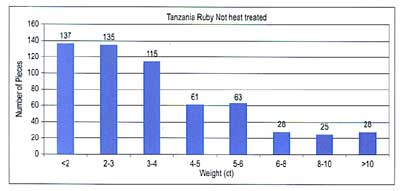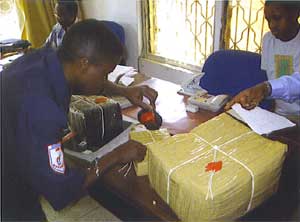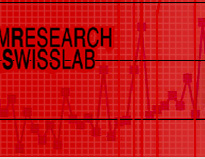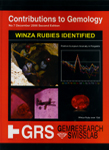 |
|
Fig.
Tan04 The graph shows the number
and sizes of gem quality "Winza" rubies
(eye- clean and with “vibrant red" colors)
that have been tested by the
GRS laboratory in 2008. Note that mag-nificent rubies
over 5 ct are extremely rare. Two dozens gem quality
faceted rubies over 10cts have so far been tested.
All rubies in this statistic are spared of thermal
enhancement. Over 30 stones received a special report
of the GRS laboratory confirming that they are considered
amongst the World’s most beautiful rubies (GRS
Platinum Award).
|
 |
|
Fig.
Tan05 One of the authors (AP) was granted
permission to use a portable gemological laboratory
operated by the Sri Lankan group in “Mpwapwa
the nearest town to the mine (See acknowledgments).
Many gem agent companies in this boom- ing town
had to establish gem-testing labs because they
were offered synthetics (e.g. synthetic Name-fusion
rough ruby fragments) and ruby imitations (e.
g. synthetic flux—grown rough spinel resem-
bling some type of rough Winza rubies).
|
|
 |
|
 |
| |
Fig. TanO6
Rubles appear in vibrant colors of pure red, slightly
orangy~red or orange—red colors. The colors
differ from those of Burmese rubies. In general
Burmese rubies are more fluores- cent and have
slightly more purplish secondary colors. Color-changing
sapphires, blue sapphires, orangy—pink ("Padparadscha)
and pink sapphires were also found in the Winza
mine. They have not gained market importance,
with the exception of the "Padparadscha"
varieties.
|
Fig.
TanO7 The picture snows the
customs ofhce in Dar-es—Salaam. The ruby
rough and rock sample parcels collected at the
Winza ruby mine by one of the authors (AP) were
sealed and the papers were stamped for export
permission in August 2008. |
|








